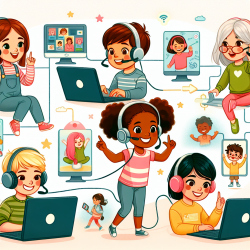Unlock the Secrets: How Social Media Can Transform Your Nonprofit's Impact!
In the ever-evolving landscape of digital communication, nonprofits are increasingly turning to social media to enhance their outreach and impact. However, a recent study titled "A Typology of Social Media Use by Human Service Nonprofits: Mixed Methods Study" reveals that many human service nonprofits are not fully leveraging these platforms beyond basic self-promotion. This blog will explore the key findings of this study and provide actionable insights for practitioners looking to improve their social media strategies.
The Power of Social Media for Nonprofits
The research conducted by Mavragani et al. (2024) delves into the social media usage of nonprofit sexual assault (SA) centers in Canada. By analyzing over 286,551 tweets, the study identifies seven thematic categories of social media use:
- Community Engagement: Engaging with the community through updates, quotes, and resource sharing.
- Organization Administration: Operational updates, recruitment, and fundraising efforts.
- Public Awareness: Raising awareness about social, environmental, or economic issues.
- Political Advocacy: Efforts to promote social change and policy advocacy.
- Support for Others: Endorsing local businesses and supporting community initiatives.
- Partnerships: Collaborating with other organizations to further mutual goals.
- Appreciation: Expressing gratitude towards donors and volunteers.
The study highlights that while organization administration is the most frequent category, political advocacy and partnerships are less common. This suggests a potential area for growth and development for nonprofits looking to expand their impact.
Sentiment and Emotion Analysis: A Window into Public Perception
One of the most intriguing aspects of the study is the sentiment and emotion analysis conducted on the tweets. The analysis reveals a predominance of neutral sentiment across all categories, with fear being the most common emotion. However, tweets related to partnerships and appreciation tend to evoke joy, highlighting the positive impact of community collaboration and support.
Understanding these emotional nuances can help nonprofits tailor their messaging to better resonate with their audience and foster stronger connections.
Leveraging Machine Learning for Strategic Communication
The study employs a supervised machine learning model to classify tweets, achieving an accuracy of 63.4%. This demonstrates the potential of machine learning to enhance social media strategies by providing deeper insights into audience engagement and communication effectiveness.
Nonprofits can harness these technologies to optimize their social media presence, ensuring that their messaging aligns with organizational goals and resonates with their target audience.
Practical Implications for Nonprofit Practitioners
For practitioners looking to enhance their social media strategies, the study offers several practical implications:
- Invest in Training: Equip your team with the knowledge and skills needed to effectively utilize social media for diverse organizational objectives.
- Expand Beyond Self-Promotion: Explore opportunities for political advocacy and partnerships to amplify your organization's impact.
- Utilize Sentiment Analysis: Leverage sentiment and emotion analysis to tailor your messaging and engage more effectively with your audience.
- Embrace Machine Learning: Consider integrating machine learning tools to gain deeper insights into your social media performance and audience engagement.
By implementing these strategies, nonprofits can harness the full potential of social media to drive meaningful change and achieve their organizational goals.
To read the original research paper, please follow this link: A Typology of Social Media Use by Human Service Nonprofits: Mixed Methods Study.










